How to Use Reading Sprints for Motivation and Critical Thinking
Ever wish you could add more student motivation and critical thinking to your independent reading program? Depending on the year or the class, it’s normal for students to show varying degrees of enthusiasm and engagement with choice reading. Sometimes, students don’t read at all. Other times, they seem to go through books like Kleenex. As we are discussing reading sprints in this post, the goal really isn’t for students to fly through their books as quickly as possible while sacrificing the integrity of the process.
When students aren’t taking to independent reading as enthusiastically as we’d like, it’s tempting to add more layers of accountability. And, one of those layers is often the reading log. Honestly, I don’t promote reading logs because they make reading feel like a boring “I gotcha!” which definitely does nothing for student motivation.
Instead, I use class reading shelves, reading ladders, and reading displays so that students can share books and form positive associations with reading. Literature becomes a regular part of our class dialogue.
In my quest to continually reflect and learn more about what motivates students, I’m always searching for new approaches. Recently, I came across reading sprints, which one of my online teaching friends has had an incredible amount of success with this year, both in person and virtually.
I reached out to her to get more information, and luckily for us, Sandy @elaeveryday was generous enough to share more details and resources. In this post, you’ll find my interview with her regarding the what, how, and why of making reading strategies happen in your classroom. I loved reading about her experiences, and I hope you do, too.
WHAT ARE READING SPRINTS?
What’s a quick gist of reading sprints?
Reading sprints are a period of time where students will focus on reading as many pages while they can and still comprehend the text. These are done every single day, and students keep track of their pages read. In general, the concept has been around for a while, and people have often done reading sprints during read-a thons.
Why should others try reading sprints with their students?
They are beneficial with helping students build stamina and reading fluency. (It is basically their choice reading time, but adding the word “sprints” has motivated my students for some reason.) Plus, you can align reading skills with each round of sprints, which connects choice reading to the bigger puzzle of addressing reading standards.
Reading sprints are great for differentiation because students are getting to read a book of their choice. This means that they get to not only choose the level but also format of the book they’re reading. Also, the skills they are practicing are based on what we have been studying or what I know they need a little more practice with.
For instance, below, you can see how Sandy has asked students to write evidence of author’s craft on a sticky note.
GETTING STARTED
What are some step-by-step instructions you can give teachers who want to get started?
We do 10-15 minute reading sprints every single day to start off the class period. (I have a 54 minute class period.) Students come into the classroom, grab their supplies for the day, and then get settled in to read their book of choice. On Fridays, we occasionally do extended reading sprints (more on that in a minute).
In Texas, one of our standards is for students to self-select a text and read independently for a sustained period of time. Reading sprints do just that.
Quick Checks
One specific approach that has worked is quick checks during reading sprints. This is when I give students a concept for them to think about while reading. For example, if we have been focusing on the author’s craft, I will have them look for examples in their reading.
After all of my classes have completed their quick check, which are either sticky notes or a Google Form, I go through them to find insightful examples to share with the classes and look for students who need some extra support.
Usually, I will pull the kids for a few minutes to confer with them if it seems they still need help with a concept. As for the best examples, I keep them on the board or post them in a gallery type format for their peers to check out. Sometimes I even use them as examples in my mini lessons.
Extended Sprints
When we do extended sprints, students have a focus for each sprint and then write in their notebooks and discuss with their peers after. With these longer sprints, teachers can structure rounds that are specific to reading skills and strategies aligned with direct instruction or students’ needs.
In the example below, Sandy has students doing three rounds of reading sprints. For the first round, they warm up with a connection response (favorite character). The second round prompts them to think critically and identify a signpost the author has used. During the third round, students make a prediction, applying a reading strategy Sandy has taught students to use to help them focus on text evidence.
TIPS FOR SUCCESS
What are some “lessons learned” or insights you can share after implementing these for a while?
Start off with students reading for just a small increment of time. Students need to build up their stamina just like a long distance runner. Runners don’t start off running half marathons; they build up to it. I usually start with 5 minutes and then build up to 15. This year we read for 5 minutes the first week, 10 minutes the second week, 15 the third week. Now my students can read even longer without losing focus, and I will allow them the time if I can.
Do NOT make reading sprints a competition among students. It leads to students just writing down pages to get ahead, which undermines the value of the strategy.
Give students time to talk about their book or the skill they practiced. When we do the extended reading sprints, I usually devote the entire period to it. After at least one of the sprints, I give students time to write their response and then turn and talk to a neighbor about it.
Give student freedom. Let students pick what they are reading. The book doesn’t have to be written in prose. I have had great conversations with students about how their reading rate changes based on what they are reading for the day. For example, graphic novels and novels in verse usually go by much quicker because of how the pages are laid out. We also talk about how in different parts of the book, reading rate can change. In a suspenseful part, you usually read much quicker because of the increasing anticipation.
ASSESSING READING SPRINTS
Let’s talk about grading. Do you grade reading sprints, or do you just informally assess students through conferences?
I do grade the extended reading sprints sometimes. I’m really just looking to make sure that they can fully explain their answers and back that up with evidence from the story. I don’t require them to include quotes, but they do have to be specific with evidence from the text.
Here, you can see how Sandy has students record responses in their reader’s notebooks during extended reading sprints. A simple checkmark shows students that she has read their thoughts. From this point, she has data to support students who need more practice with specific skills.
MEASURABLE MOTIVATION
What is the most rewarding experience you’ve had with reading sprints so far?
I began calling our choice reading time reading sprints in the late fall. It seemed like after students started to see the number of pages they were reading every day that they really buckled down and took that reading time seriously.
There were students who had barely finished a book all year that are now reading a book a month. Their reading stamina is still soaring!
How do you make reading sprints measurably motivating for students?
In terms of tracking progress, students keep track of pages on an index card. I have them input their total number of pages at the end of the week in a Google Form. Make a copy here. (They also have a spot in their spiral notebook where they keep track of the books they have read by genre.)
As a class, we see how our pages increase by the week and the month. My virtual students fill out a basic form every day. I have also noticed that during our extended reading sprints, the responses and conversations that students are having about their books are much deeper than they were at the beginning of the year.
Have you faced any resistance?
I have never had a student that’s refused to engage in a reading sprint. Earlier in the year, I would have kids that would fake read, but after conferencing and helping them find a book that they liked, they started to read along with everyone else.
VIRTUAL READING SPRINTS
How can reading sprints work in different teaching settings (in person / online)?
Reading sprints can be done both in person and virtually. The virtual sprints look much like how it is done in the classroom except that everything is kept track in a Google Form. Make a copy of Sandy’s virtual learning Google Form daily check-in here.
Several times a week, I open up a Google Meet for students to join and sprint if they want to.
Teachers can add rounds to reading sprints both in person and online. During each round of reading sprints, teachers can choose to set specific reading skill goals. Displaying an agenda with the focus for each round along with a countdown timer can help students who are at home to self-regulate.
DATA AND STUDENT RELATIONSHIPS
What types of data can you collect from reading sprints to help you get to know your students?
There are a couple of ways that I collect data.
One way is with the reading sprint forms that the students fill out on Fridays. I look at the number of pages they read each day and their total for the week. If I notice that they are not progressing or are even seeming to go backwards, I confer with the student to see what is going on. Maybe the book is too far above their level, they are in a slow part of the book, or they have been not focusing on reading during the sprints.
Another way is through the quick checks and the extended sprints. I read the responses for both, which helps me decide if I need to do another mini-lesson or work with small groups.
Does it help with building relationships?
Relationships have grown throughout the year because of the book discussions that students are having with each other and myself. I have seen students who were fake reading at the beginning of the year now doing book talks with their classmates.
Their relationships with books have also blossomed. Several students who hated reading or fake read at the beginning of the year are now devouring books and are giving others reading suggestions.
And that’s a run-down of what reading sprints are, why they are beneficial, and how to get started with them in the classroom. Sandy and I hope that you see reading sprints as a way to boost engagement and student motivation with choice reading. Turn traditional, mundane reading logs on their heads!
READ NEXT:
- Full-Choice Classroom Book Clubs: A How-to Guide
- Helping Students Select Books in Middle and High School
- 10 Ways to Create an Inspiring Reading Culture
Sandy is an 8th grade ELAR teacher in a town south of Houston, Texas. She has been teaching for 16 years, this being her 7th year in 8th grade. Sandy is passionate about reading and sharing her love of reading with her students. She first learned about reading sprints from online teaching friends, @missboverseas and @teachingintheflx, and she was excited to pass that knowledge on to the broader teaching community. Connect with Sandy on Instagram @elaeveryday.
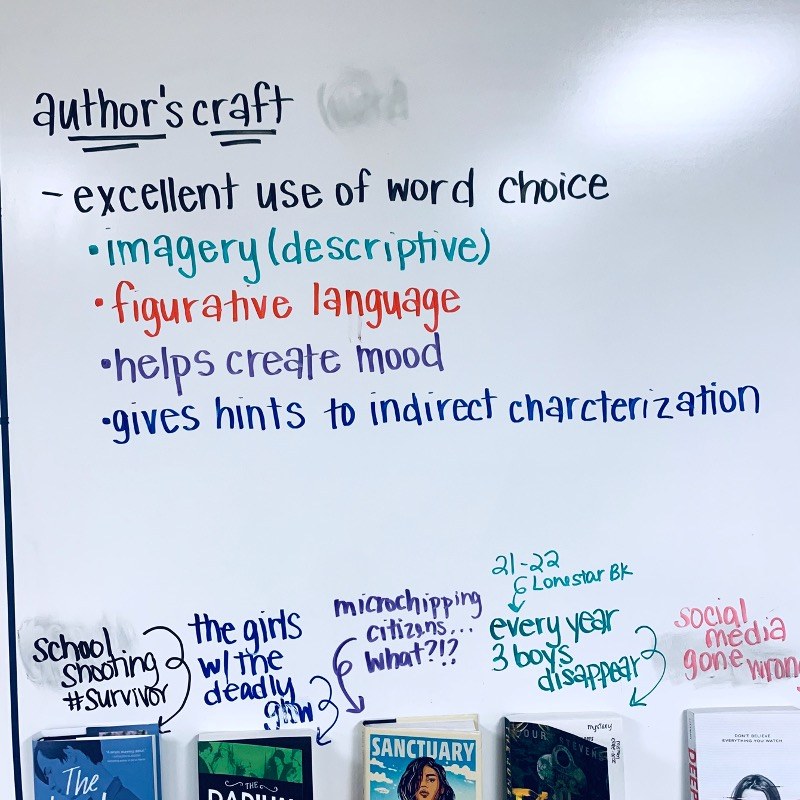
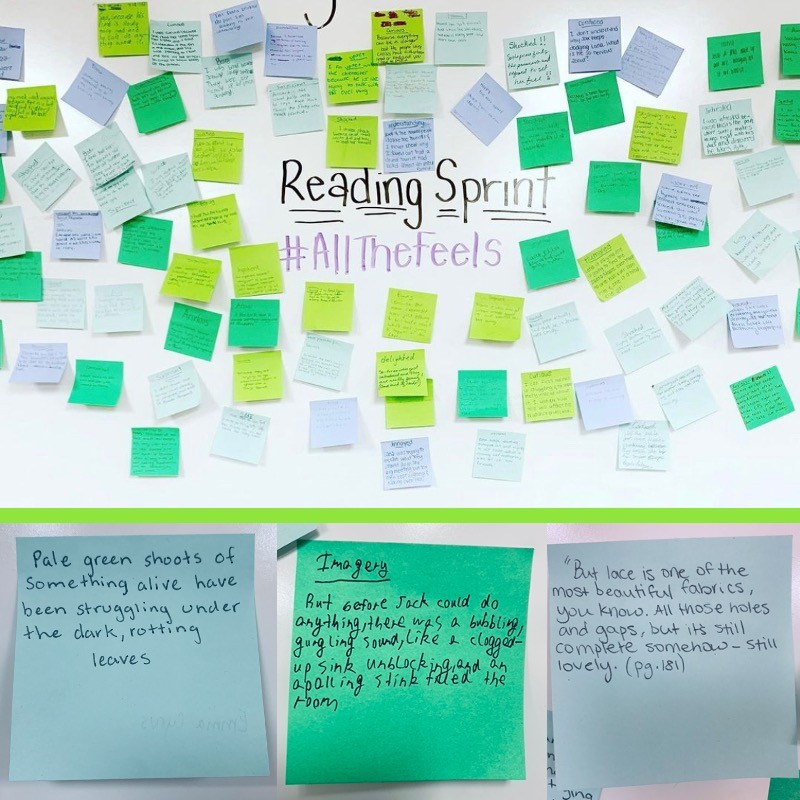
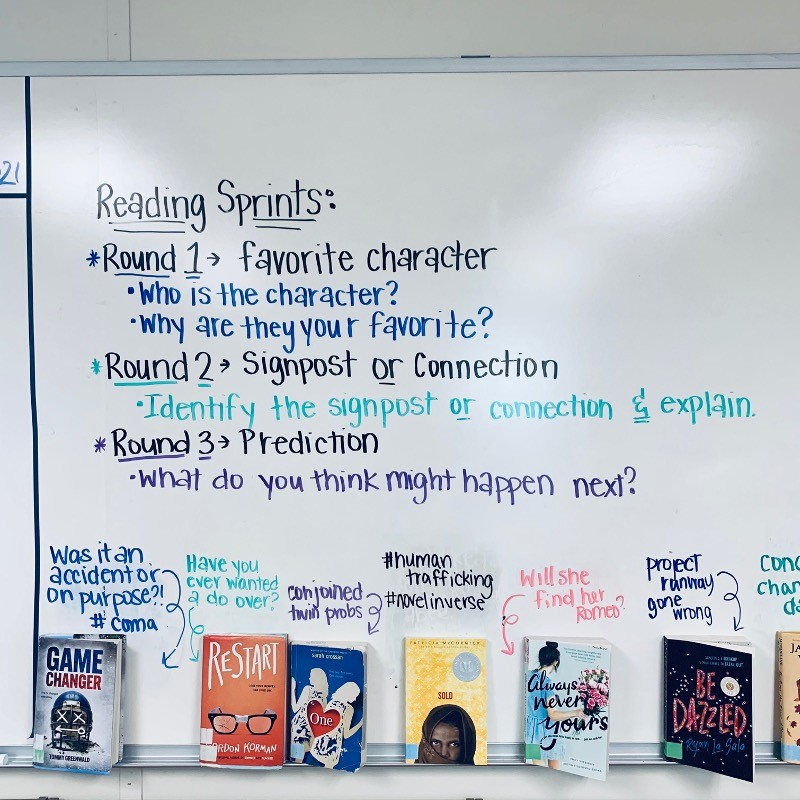
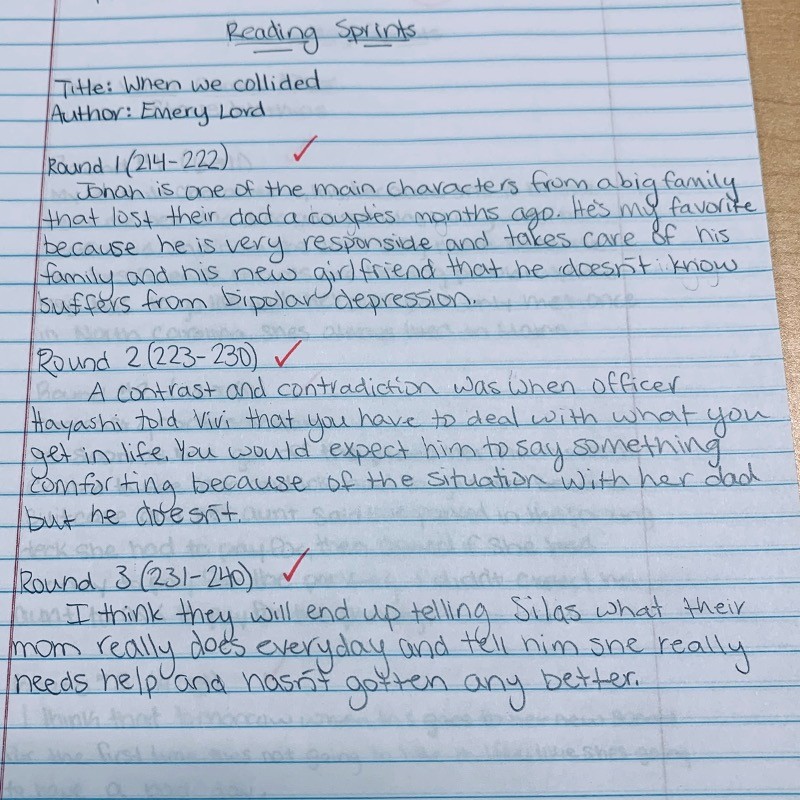
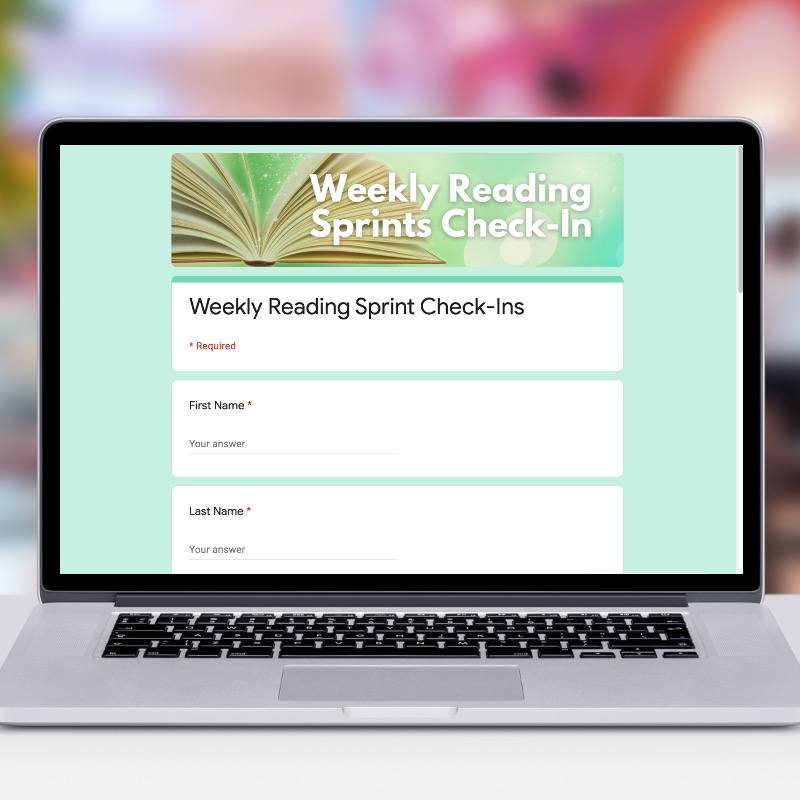
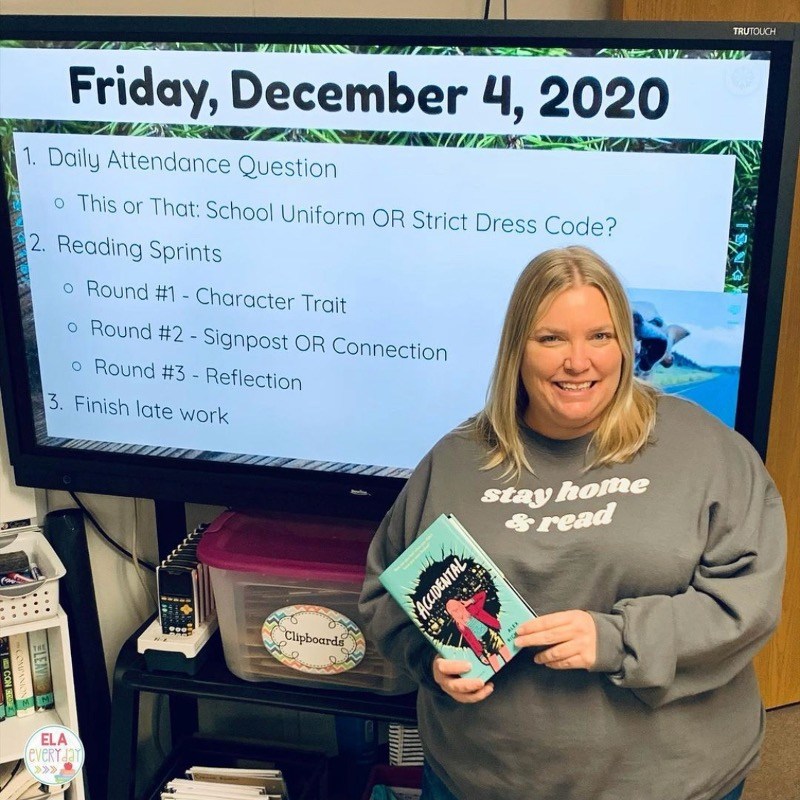

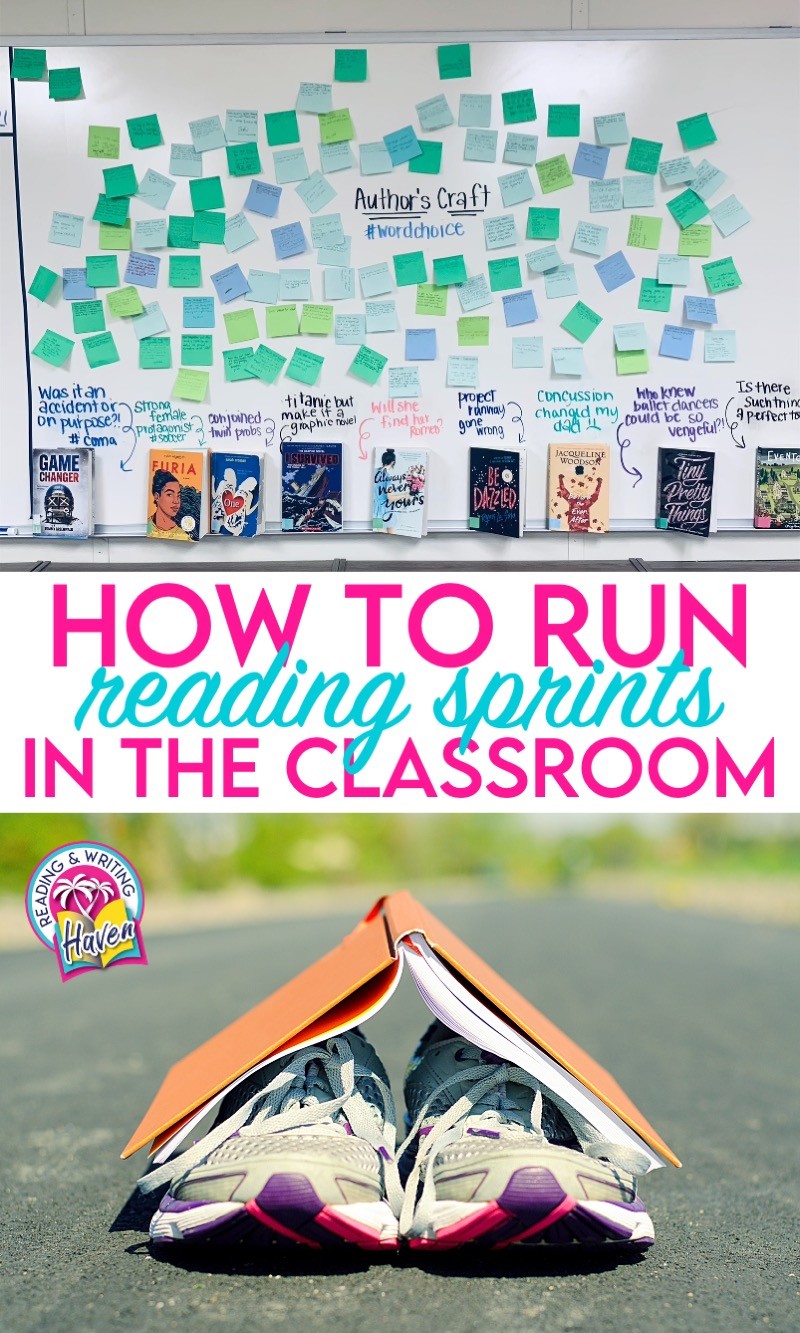
I am new to reading sprints and I was wondering if you happen to have a list of questions or topics you have the students look for while they read? I appreciate your help! Thank you!
Hi Alicia! I do not have a one-page list of questions for reading sprints, but you’ll find some of the type of prompts you could give students in these two resources:
https://www.teacherspayteachers.com/Product/Reading-Comprehension-Discussion-Task-Cards-Whole-Class-or-Independent-Reading-3489483
https://www.teacherspayteachers.com/Product/Reading-Bookmarks-Quick-Reading-Comprehension-Assessment-to-Use-with-Any-Novel-3434005